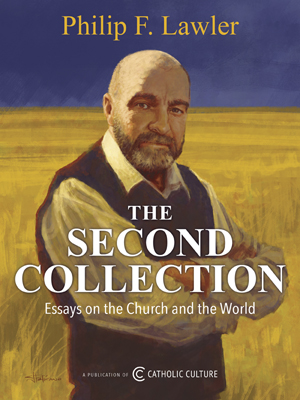The Museum of the Bible is better in what it imagines than in what it preserves
By Thomas V. Mirus ( bio - articles - email ) | Jan 26, 2018
When I was in the DC area celebrating Christmas with family, I visited the new Museum of the Bible with my parents. In the three hours we spent there we didn’t see everything it had to offer, but it made an overall good impression and we would certainly recommend it to Catholics. At Catholic World Report, Brian O’Neel provides a good overview of what to expect from a visit, so here I just want to share my impressions of a few things that article doesn’t touch on.
My parents and I agreed that the museum was weakest on artifacts. It has plenty of them, but they are mostly manuscripts or fragments of manuscripts and they all start looking the same fairly quickly. (They really should invest in some great Biblical paintings and sculptures.) It was in its more imaginative features that the museum really impressed me, in particular the original video content, some of which is integrated into the exhibits and some of which stands its own.
In the latter case, the Museum has made a number of short (think 12 minutes) films dramatizing and providing cultural context for Biblical events. Shot on location in the Holy Land, they have high production value and feature some well-known actors. The one I saw depicted the relationship between St. John the Baptist and Herod (played by John Rhys-Davies), culminating in John’s beheading. I found this film moving, and appreciated the tasteful use of poetic license which helped to illuminate these two historical figures.
The museum finds interesting ways to integrate shorter video content into the other exhibits, enlivening what would otherwise be a lot of staring at manuscripts and plaques. In an exhibit tracing the influence of Scripture on the American founding, Benjamin Franklin and a British loyalist debate Biblical justification for rebellion against tyrants. In the huge exhibit on the history of the Bible, St. Jerome complains about how no matter what choices one makes in translating Scripture, one will be accused of impertinence, impiety or heresy, while Erasmus, Luther and others have their own comments to make. In these clips the words are taken directly from the writings of these historical figures and dramatized by actors.
Loveliest to me was a video screen in the shape of a table, surrounded by chairs. On the screen plays a series of videos of Christians and Jews around the world saying grace before meals. The videos are shot from above so we see only the table, the dishes and the hands of those saying grace, followed by sped-up footage of the meal being consumed. We hear an Ethiopian Jewish family celebrating Passover, as the children sing “Why is this night different from all other nights?” and the adults respond. There is a Coptic Egyptian family, a Catholic family in India, a Protestant family in Georgia, and more I didn’t stay to see. All have their own way of saying grace according to the occasion, in their own language and with their own cuisine, but it is moving to see the unity of believers expressing their faith and their gratitude to God in this simple and mundane spiritual practice.
All comments are moderated. To lighten our editing burden, only current donors are allowed to Sound Off. If you are a current donor, log in to see the comment form; otherwise please support our work, and Sound Off!








